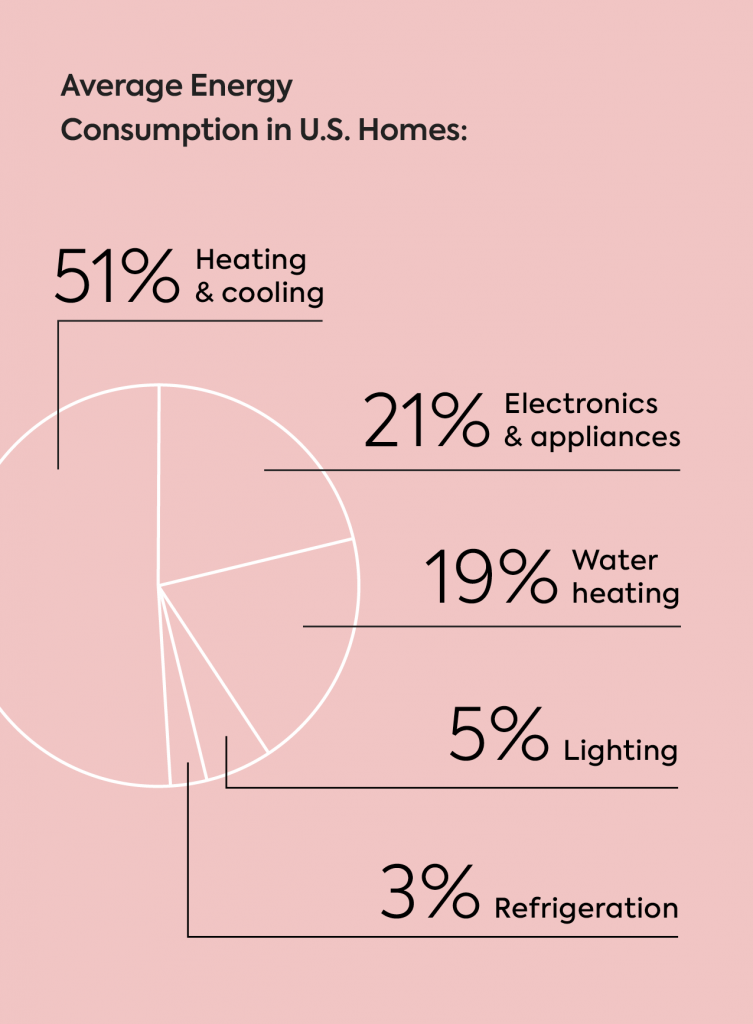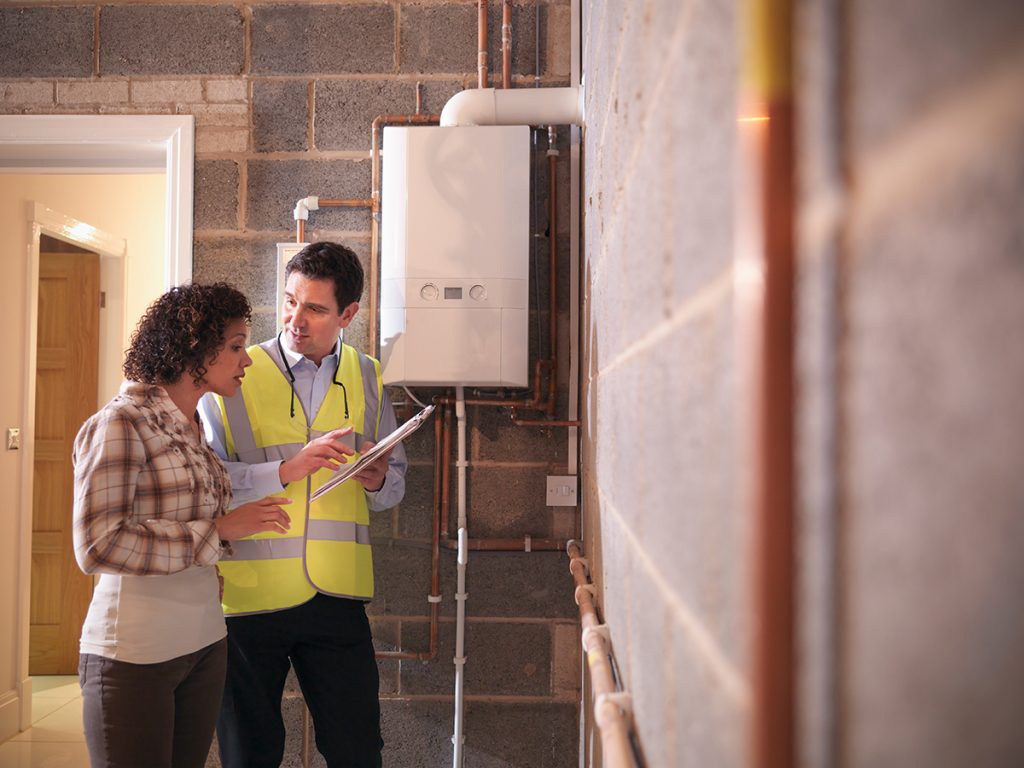Discover what you can do about your high gas bills in this guide.
This is a tough time for anyone who has to purchase energy (read: anyone with home to heat!).
And if you’ve just received a high gas bill? You’re really feeling the pain.
Earlier this year, the Energy Information Administration (EIA) forecasted a significant increase in the cost of heating U.S. homes this winter—and, so far, those projections are coming to pass (1, 2).
Natural gas is going up: Gas bills have increased 66% since 2020—and they’re predicted to up to 34% higher this season (3).
Those are some significant numbers. So why is your gas bill so high? And what can you do about it?
In this guide, you’ll learn:
- Why your natural gas bill has increased
- Strategies to help reduce your gas bills right now
- How to lower your gas bill
- How to keep your paid-for heat inside your house (so you waste less gas!)
- The best alternative to natural gas home heating
- How to replace your natural gas heating system for no upfront cost
By the end of this guide, you’ll have a better understanding of why your gas bill is so high and how you can heat your home more efficiently and economically—that way, you can get the most out of your energy use.
Ready to dig in?
Why you’re seeing a high gas bill in 2022–2023
So, let’s get to the point: Why is your gas bill so high?
It’s a combination of two factors.
1) The price of natural gas has been on an upward trajectory for years
Natural gas is way more expensive now than it has ever been. There are lots of reasons for this increase in 2022–2023:
- A rise in extreme weather events, which causes higher energy usage and infrastructure damage
- Labor shortages resulting from the pandemic
- The war in Ukraine (which has caused the U.S. to ship more natural gas to Europe)
- Energy prices overall are rising (4)
This is just a quick overview. Get the complete picture of why natural gas prices are rising here.
Suffice it to say: All of these factors have resulted in incredibly high natural gas bills for homeowners across the country.
2) Your house is using a lot of natural gas
The other reason your gas bill is high is that your house is wasting a lot of the energy you’re paying for. (Sorry to be the bearer of bad news.)
Most houses in the U.S. are incredibly inefficient with their usage of natural gas, largely due to air leaks in the home and a lack of proper insulation.
90% of U.S. homes are under-insulated.
NAIMA.org
So if your house is like the majority of houses in the country, it’s using way more natural gas than is actually necessary to heat your house.
And since over half of your house’s energy use is used for heating and cooling, a house that can’t keep heat inside will drive up your natural gas bills significantly (5).
(Here’s how to find air leaks in your home.)
This effect increases as extreme weather events increase, too—the more extreme the weather gets, the more you’ll see the effect of an inefficient house on your gas bill.
This is a big problem. So how do you fix it—and lower your natural gas bill at the same time?
How can I keep my gas bill low?
Before you can develop a strategy for reducing natural gas costs, you need to know how your house is using the gas that you purchase to heat your home.
Which appliance is using the most natural gas in your house?

What uses the most gas in a house?
Your furnace, almost certainly. The biggest use of energy in homes, in general, is for heating and cooling (6). So if you have a natural-gas powered furnace, you can bet that it’s the main culprit when it comes to energy usage.
Of course, in addition to heating, there are a few other appliances in your home that may also use natural gas:
What appliances use natural gas?
- Furnaces (obviously!)
- Cooktops and ranges
- Gas fireplaces
- Dryers
- Barbecue grills and fire pits
- Natural gas refrigerator (yes, they exist!)
These other appliances don’t use nearly as much energy as the primary heating system, so they shouldn’t be the top priority when you’re making your house more efficient.
Still, the costs to use them add up over time (not to mention, burning fossil fuels in your house to cook pasta isn’t so great for your indoor air quality)—so don’t overlook them when it comes to optimizing your house for efficiency.
Okay, now that you know what’s most responsible for driving up your gas use, here are some strategies for reducing your gas bill.
Strategies for reducing your gas bill immediately
- Lower the thermostat
- Optimize your house for better heating
- Use natural gas appliances mindfully
Let’s look at each one of these methods.
Lower the thermostat
First, one of the best ways to lower your natural gas bill is to lower your thermostat by a few degrees. It’s a pretty small step, but it can make a big difference in how much natural gas your house uses to stay warm.
Lowering your thermostat by just a few degrees can save you a surprising amount of energy and money.
For example, the Department of Energy estimates that you can save as much as 10% on your energy bill by lowering your thermostat by 7 to 10 degrees Fahrenheit for eight hours a day (7).
If you’ve got good blankets, try lower temps overnight while everyone is asleep. Getting a smart thermostat that can lower the temperature automatically makes this strategy even easier.
To see a full list of some of the best ways to save energy, read How to conserve energy at home.
Optimize your house for better heating
Next, make sure your house has been optimized for better heating.
Check that all the registers in your home are uncovered and unobstructed, and if it’s been a few years since your furnace was professionally serviced, now is the time to do that.
And if it’s time to change your air filter? Do that too! These steps can help ensure that the furnace is running as efficiently as possible and that you’re not wasting even more gas.
Also, if you’ve already got gadgets and tools that help keep the heat in (think: door snakes and draft stoppers), it can’t hurt to pull those out of the closet and put them to work.
They don’t work super well, but they do work a little—and everything counts when it’s really cold outside.
Use natural gas appliances mindfully
Finally, when using other appliances in your home (like your cooktop or range), be mindful of how much natural gas they use.
When cooking, for example, be sure to use only the minimum flame necessary, and don’t be afraid to turn off the flame at the end of cooking and use residual heat. (Here are some more ways to be efficient while cooking.)
What if you have a natural gas fireplace? Just make sure the kids turn it off before they go to bed.
These are all somewhat effective measures for the short-term, but if you want to really make a dent in your natural gas bills, you’ll need to tackle your home’s inefficiencies head-on.
Here’s how to do that.

How to lower your gas bill
To really lower your gas bill to the absolute minimum, you’ll need to make your house more efficient—and keep more of that “bought air” in. (Which you may be able to do for no upfront cost.)
How? There are three major action points here:
- Get a home energy audit
- Seal and insulate your house
- Switch to more efficient appliances
Get a home energy audit
An energy audit is a way to see where your house is wasting energy—and to identify the best ways to fix the problem.
You can get an energy audit through your natural gas utilities, HVAC technicians, or energy-efficiency specialists. (Read What home energy audits are available near me? to find out what energy audits might be available in your area)
You can also get a free audit from Sealed (if your house qualifies).
However you get your audit, you should end up with a detailed report and clear next steps. Those next steps will almost certainly include the improvements in this next point.
Seal and insulate your house
Air sealing is the fancy term for plugging up the tiny holes and gaps in your home that let all the heat escape. (Find out more about air sealing here.)
It’s essential if you want to stop drafty windows, warm up your floors, and use energy efficiently.
And in almost every case, you’ll need to install or replace insulation somewhere in your home (usually in your attic) to ensure that all the heat energy your furnace produces stays in the house.
For a quick visual of how (and why) air sealing and insulation works, check out the video below:
Want to know more about weatherizing your home? Read What is weatherization? for a deeper dive.
These steps might sound intimidating, but trust us—we’ve seen a lot of houses, and air sealing and insulation updates are by far the most effective strategies for keeping heat inside.
Up to 40% of the energy you purchase is being lost to air leaks in your home.
EnergyStar.gov
And that will make your natural gas dollars go a lot further. (These steps will also help get rid of cold drafts, too.)
Switch to more efficient appliances
Finally, if you really want the best energy optimization for your home, look into replacing older, natural-gas powered appliances for efficient, electric appliances.
Electricity is a better source of energy for just about every appliance now. Even professional cooks are switching from gas to electric induction stoves—and giving them rave reviews. (Not to mention, reports are showing that gas stoves are a serious health hazard.)
Of course, to see the biggest impact on your natural gas bill, you’ll need to switch to a different kind of home heating system—one that doesn’t use natural gas at all.
Point of order here, because you’re probably asking, “But how can I heat my home without natural gas? And is it really worth the effort to transition to a different kind of heating system?”
The research is in and the data is pretty clear: You can heat your home more efficiently (and without natural gas) if you trade in your gas furnace for a heat pump.
Heat pumps are the best heaters on the market right now (especially since they’re also air conditioners).
They’re also by far the most efficient—up to 3 times more efficient than a traditional HVAC system (8). And they’re easy to transition to, since some models don’t even require ductwork.
To go in-depth on the pros and cons, check out our guide to converting from gas to an electric heat pump.
(First time learning about this technology? You’re not alone. Learn more about cold climate heat pumps here. There’s plenty to say!)
Heat pumps are amazing—but they do come with a hefty installation price tag. That’s where Sealed comes in.
Get a home energy makeover—for $0 upfront cost
Air sealing. New insulation. Installing heat pumps.
These steps will do wonders to lower your natural gas usage—but they’re definitely easier said than done.
You’ll need professional help for all of it (as well as the time to organize the upgrade plan, choose the upgrades, hire the contractors, and oversee the project). That’s not to mention the cost.
All the stress and financial woes vanish when you choose Sealed for your home upgrades.
Here’s how it works: If your house qualifies for a Sealed energy makeover, you’ll get a free expert energy assessment of your home, and we’ll create a customized plan for your energy upgrades. (You’ll get everything you need and nothing you don’t!)
After you approve the plan, we’ll hire and vet the best local contractors and manage the project from start to finish. You pay for the work done with a flexible payment option that works best for you and your budget.
Interested? See if your house qualifies here—it only takes 2 minutes.
